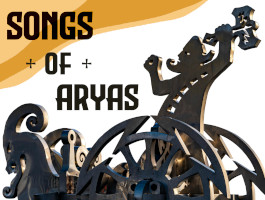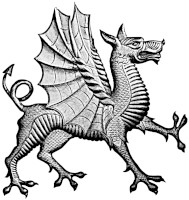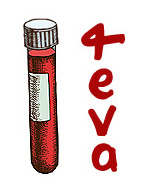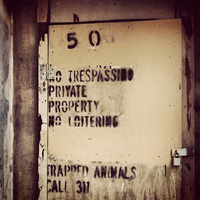It is this reader’s theory that much of Howard’s adventure fiction—which was extremely class conscious and often frontier based—such as the Black Stranger, Wolves Beyond the Border, Beyond the Black River and Red Shadows were inspired by his impressions of early American history. The dynamic of common working farmers and scrappy backwoodsmen caught between the vice of the colonial administration in the coastal towns and the Indian tribes of the interior, is a reoccurring motif in his work. Below is the second half of my review of a common, and fairly white washed historical novel that would have been widely available in Howard’s youth, which, despite its jingoistic theme, exposes colonial America for the mercantile slave society it was.
The events leading up to the revolt led by Nathaniel Bacon in 1676 against the Governor and House of Burgesses in Virginia, span four decades and include numerous Indian massacres and the struggle between the Dutch, Swedish, New England Puritans, Maryland Catholics, Virginia Anglicans, The Crown, and the Protectorate under Cromwell and his son from 1653-60.
During the protectorate the Virginians offered to shelter the heir to slain King Charles, and did accept some loyalist refugees.
After the restoration in 1660 the Puritans in New England sheltered two of the men wanted for regicide.
In both cases, the ruling power in England paid Indians to hunt down the fugitives and attack settlements that sheltered them.
King Phillip’s War in New England, is covered poorly in this book, which is more focused on Virginia and its history. The author does note that King Phillip's son was sold to a sugar planter in Barbados, the only admission I have found of New England Indians being sold, although whites were buying and selling Indians up until the 20th Century.
The author, or possibly editor, was engaging in a white wash of the English slave trade, which in the 17th century, consisted primarily of kidnapped children, political prisoners and POWs from the British Isles. There had been two previous revolts of white slaves and indentured servants [which were white slaves living under a fixed sentence that averaged from 3-31 years, and rarely saw them live to see freedom.]
In 1676, the year after the Indian War in New England, a penniless aristocrat named Nathanial Bacon took up the cause of the poor whites who were being attacked on the frontier by Indians in the pay of the governor down in Jamestown. This had been policy in every colony, with the English Crown employing Indians at this very time in the hunt for the regicides in New England. The idea was to make the coastal areas of the colonies into a penal colony in which the upper class got rich on the backs of the white slaves. The coast did not offer an escape, nor did the forested mountains inhabited by Indian tribes whose warriors were paid in guns, powder and gold for the scalps of escaped slaves.
The author falsifies this account by blaming the revolt in Virginia on the eccentric Governor who had a peculiar love for Indians. He does not, however, remove the facts which shine through.
Bacon led a force consisting of 170 loyalist horsemen [free] and fifty-seven patriot horseman [free] and an undetermined number of escaped white slaves, indentures, and backwoodsmen on foot. The governor recalled the 170 loyalists and dispatched orders to the Indians who were giving him reports.
The Indians had entrenched themselves on a hill at the site of Richmond, where they had built a colonial style log palsied fortress and had amassed 4,000 pounds of gunpowder!
The author would have us believe that these 57 horseman took a fortified position supposedly held by 5-600 Indians, but actually held by 150. He simply neglected to mention the 100s of escaped white slaves, ‘vagabonds’ earlier referred to as roaming the country as thick as fleas, and the few frontiersmen that were earlier mentioned, whose homes had been raided and wives scalped for harboring white slaves.
The previous year a man named Washington murdered 12 Indian Chiefs in Maryland at a parley for this same reason, that these Indians were wearing the scalps of their friends and family, having been supplied with weapons and powder by the governor to keep the poor whites close to the coast on the plantations. Aspiring men of power like Washington and Bacon where tapping into the body of vagrant men and disgruntled slaves as a manpower pool.
In any case, the men Bacon had with him took the hill fort, and blew it up with the powder magazine, losing only 3 men and killing 150, which leads this reader to believe that the total number of English was about 300, and the warriors at the stockade numbered only about 50, with the others slain being their women and children.
Bacon soon had a battalion-sized force which he used to storm Jamestown—which was defended by black freedmen—then burned it to the ground when he heard that troops had been dispatched from England. He headed upcountry and prepared to meet a militia force coming over from Maryland—whose men were deserting to him. Something about Bacon appealed to the poor whites, where they did not trust his aristocratic lieutenants.
On the eve of battle Bacon died of a disease contracted in the siege of Jamestown, and the army fell apart, the poor whites and the horsemen that had sided with them not being able to agree on a commander.
These men now had nowhere to run. By 1677 troops were for the first time on Colonial soil. 23 of the horsemen were hanged, with the rest pardoned or escaped to Carolina. With the Indians scouring the frontier and the troops in country and loyalist militia patrolling, all of the officers of the rebellion were done away with or driven south. There is not a mention of what became of the common soldiers of the rebellion. At this date their names were not even listed in court documents, being merely human cattle.
To give you an idea of their probable treatment, the penalty set upon the wives and children of the rebel horsemen was to make them live in a cabin out in the wilderness, which was the hope of the poor whites!
How many had their scalps cashed in by eager Indian warriors coming out of the Shenandoah to hunt white men for a bounty?
How many were shot out of hand by the 170 horsemen still loyal to the governor and the 800 British troops?
How many servants were rounded up and put back to work under extended indentures?
How many of the slaves were rounded back up and set to their grinding labors while being constantly whipped at the post and ducked on the stool?
How many made it to Carolina?
Hopefully a handful at least.
As for the authority in far away England, King Charles the Second had this to say about the brutal mismanagement of Virginia:
“That old fool [Governor Berkeley] has hanged more men in that naked country than I have done for the murder of my father.”
The colony was largely empty now. But more children were being kidnapped in Scotland and rounded up in the streets of London, soon to be shipped across the cruel sea to be set to work clearing the forest inhabited by the savage warriors who were armed and rewarded to hunt them should they try and run off.











James, as Hunter Thompson said, in a nation ruled by swine, pigs move upward, the bastards can really fly! the revolt being led by a guy named Bacon. Ishmael.
If Bacon would have won instead of Washington 100 years later, consider what a boon that would be for fast food marketing these days! We already wrap everything in bacon. Imagine if Bacon were the father of our country? We could have wrapped him in the flag and president's day would be as much a holocaust for pigs as Thanksgiving is for turkeys.
The marketing opportunities would be endless!